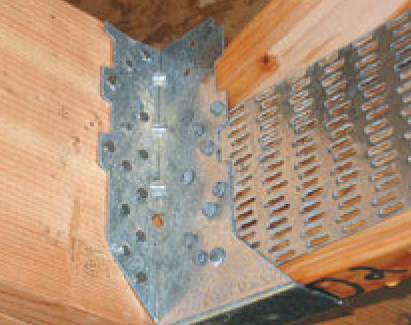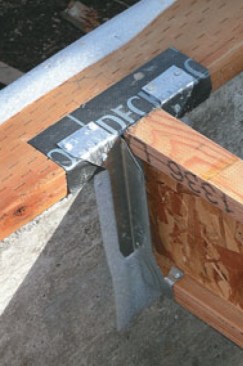14 min read
Installing hardware on wet walls can seem like a daunting task, especially when you’re worried about moisture and potential damage. But imagine the satisfaction of a perfectly mounted towel rack that withstands the test of time and humidity.
You might wonder, is it really possible to secure fixtures without compromising the integrity of your walls? The answer is yes, and this guide is here to help you achieve that. By following a few strategic steps, you can confidently equip your bathroom or kitchen with the hardware you need, without the stress and uncertainty.
Curious about how to ensure a seamless installation? Keep reading to discover the tips and tricks that will make your project a success, saving you time and money in the long run.
Challenges Of Wet Walls
Installing hardware on wet walls can be difficult. Moisture weakens the wall material and causes problems.
Wet walls may lead to poor hardware grip and faster damage. It is important to understand these challenges.
Common Causes Of Wall Moisture
Wall moisture happens for many reasons. Some causes are easy to fix, while others need more work.
- Leaking pipes inside walls
- Poor sealing around windows and doors
- High humidity in the room
- Rising damp from the ground
- Cracks in the wall letting water in
These issues let water enter or stay in the wall. This creates a wet environment that harms the wall.
Impact On Hardware Installation
Moist walls reduce the strength of screws and anchors. The hardware may loosen over time or fail.
Wet walls can cause rust on metal parts. This lowers the hardware’s life and safety.
- Hardware may not hold well in damp plaster or drywall
- Paint or plaster can peel around hardware
- Fasteners can slip out or break
- Electrical hardware risks short circuits due to moisture
To avoid these problems, walls must be dry before installing hardware. Use proper materials for wet conditions.
Selecting Suitable Hardware
Installing hardware on wet walls needs careful choice of materials. Wet walls can cause damage to regular hardware.
Using the right hardware helps prevent problems like rust and weak support. Pick materials made for moist environments.
Materials Resistant To Moisture
Materials that resist moisture last longer on wet walls. They stop water from soaking in and causing damage.
Common moisture-resistant materials include plastic, stainless steel, and treated wood. These materials keep hardware strong.
- Plastic parts do not absorb water or rust.
- Stainless steel resists rust and corrosion well.
- Treated wood prevents mold and rot.
Corrosion-proof Fasteners
Fasteners like screws and nails must not corrode on wet walls. Corrosion weakens the hold and causes damage.
Use fasteners made from materials like stainless steel, brass, or coated metals. These keep fasteners strong and safe.
- Stainless steel fasteners resist rust in wet conditions.
- Brass fasteners do not corrode easily.
- Coated fasteners have a protective layer against moisture.
Preparing Wet Walls
Installing hardware on wet walls needs careful preparation. Wet walls can cause damage if not treated properly.
Proper steps help secure the hardware and protect your walls from moisture.
Drying And Treating The Surface
Start by drying the wet wall as much as possible. Use fans or heaters to speed up the process.
After drying, clean the surface to remove dirt and mold. This helps the hardware stick better.
- Use a dehumidifier or fan to remove moisture
- Scrape off loose paint or plaster
- Wash the wall with a mold remover if needed
- Let the wall dry completely before proceeding
Applying Waterproof Barriers
Apply a waterproof barrier to stop moisture from reaching the hardware. This keeps the wall and hardware safe.
Choose the right barrier for your wall type and follow the instructions carefully.
- Use waterproof paint or sealant on the wall surface
- Apply a moisture-resistant membrane if needed
- Allow the barrier to dry fully before mounting hardware

Credit: ponomasteel.com
Installation Techniques
Installing hardware on wet walls needs careful planning. Wet walls can cause damage to fixtures if not done right.
Proper techniques help secure hardware safely and protect walls from moisture problems.
Anchoring In Damp Conditions
Anchoring hardware in damp walls requires special anchors. Regular anchors may loosen or rust over time.
Use anchors made for wet conditions. These provide a strong hold and resist moisture damage.
- Choose stainless steel or plastic anchors
- Drill holes slightly smaller than anchors
- Insert anchors fully into the damp wall
- Tighten screws slowly to avoid damage
- Check anchor stability after installation
Using Sealants For Protection
Sealants stop water from reaching hardware and wall joints. They improve durability and prevent rust.
Apply sealants around screws and anchor points. This blocks moisture and keeps the installation safe.
- Clean the area before applying sealant
- Use waterproof sealants like silicone
- Cover all exposed metal and joints
- Let sealant dry completely before use
- Inspect sealant regularly for cracks
Maintenance For Longevity
Installing hardware on wet walls needs careful care to last long. Moisture can cause damage and wear out the hardware.
Regular maintenance helps keep the hardware strong and safe over time. Checking and fixing problems early is key.
Regular Inspections
Look at the hardware often to find any signs of rust or loose parts. Check if the wall around the hardware is still firm and dry.
Inspect screws, bolts, and brackets for tightness. Replace any parts that look weak or damaged to avoid failure.
- Check for rust or corrosion
- Ensure all fasteners are tight
- Look for wall cracks or softness
- Replace worn or broken hardware
Addressing Moisture Issues Early
Find and fix any moisture problems as soon as you can. Moisture weakens walls and causes hardware to fail faster.
Use sealants or waterproof coatings to stop water from reaching the hardware. Keep the area dry with good ventilation.
- Seal cracks and gaps in the wall
- Apply waterproof coatings near hardware
- Improve air flow to reduce dampness
- Fix leaks or water sources quickly

Credit: www.jlconline.com
Safety Precautions
Installing hardware on wet walls needs extra care. Wet walls can cause damage and safety risks.
Follow safety steps to protect yourself and keep the hardware secure on the wall.
Handling Electrical Hardware
Always turn off the power before working on electrical hardware near wet walls. Water and electricity can cause electric shock.
Use tools with insulated handles. Wear rubber gloves to reduce risk. Make sure wires are dry before touching them.
- Switch off the circuit breaker
- Use a voltage tester to confirm power is off
- Wear protective gloves and shoes
- Keep tools dry and insulated
- Work in a dry area or wait until the wall dries
Preventing Mold And Mildew
Wet walls can grow mold and mildew under hardware. This can damage the wall and cause health problems.
Use waterproof sealants around hardware. Check for leaks and fix them before installation. Keep the area dry after installing.
- Apply mold-resistant primer before hardware installation
- Seal edges with waterproof caulk
- Fix any water leaks in walls first
- Use moisture barriers if needed
- Ventilate the room to reduce humidity

Credit: www.jlconline.com
Frequently Asked Questions
How Do You Prepare Wet Walls For Hardware Installation?
To prepare wet walls, ensure they are fully dry and clean. Use moisture-resistant primers and sealants. Choose corrosion-resistant hardware and avoid drilling into damp areas to prevent damage and ensure secure fitting.
What Hardware Types Work Best On Wet Walls?
Stainless steel and galvanized hardware resist rust and corrosion well. Plastic anchors and waterproof adhesives are also effective for wet walls. Avoid standard metal fasteners that corrode easily in moist environments.
Can I Install Shelves Directly On Wet Walls?
No, avoid installing shelves on damp walls. Wait for walls to dry completely. Use waterproof anchors and supports designed for moisture-prone surfaces to ensure safety and durability.
How To Prevent Hardware Damage On Wet Walls?
Use rust-resistant materials like stainless steel. Apply waterproof sealants around mounting points. Regularly inspect and maintain hardware to catch early signs of corrosion or loosening.
Conclusion
Installing hardware on wet walls needs care and the right tools. Always check for moisture before starting. Use anchors made for damp or wet surfaces. Take time to let walls dry when possible. This keeps your hardware strong and safe.
Follow these steps to avoid damage and ensure lasting results. Simple tips make a big difference in your project’s success. Stay patient and careful for the best finish.


